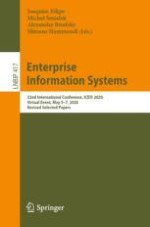2021 | OriginalPaper | Buchkapitel
Fast and Efficient Parallel Execution of SARIMA Prediction Model
verfasst von : Tiago Batista da Silveira, Felipe Augusto Lara Soares, Henrique Cota de Freitas
Erschienen in: Enterprise Information Systems
Aktivieren Sie unsere intelligente Suche, um passende Fachinhalte oder Patente zu finden.
Wählen Sie Textabschnitte aus um mit Künstlicher Intelligenz passenden Patente zu finden. powered by
Markieren Sie Textabschnitte, um KI-gestützt weitere passende Inhalte zu finden. powered by
